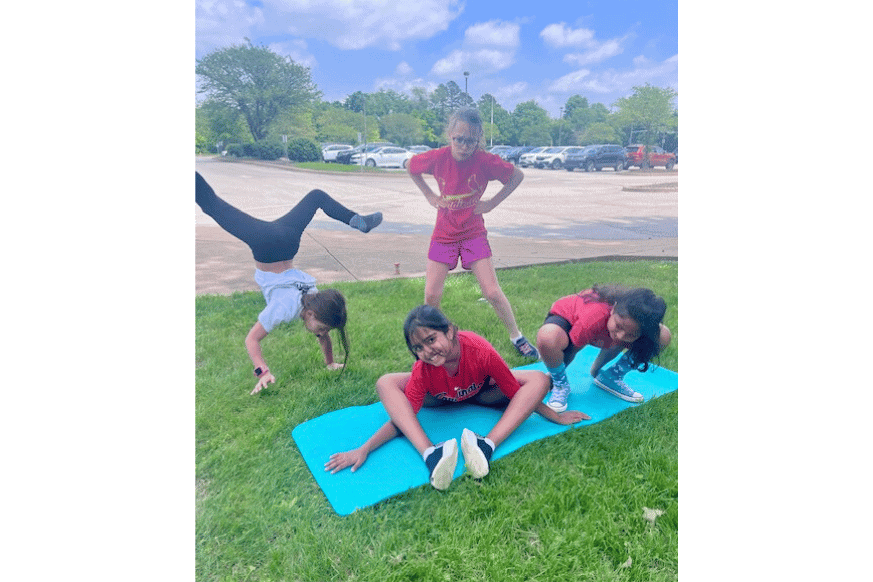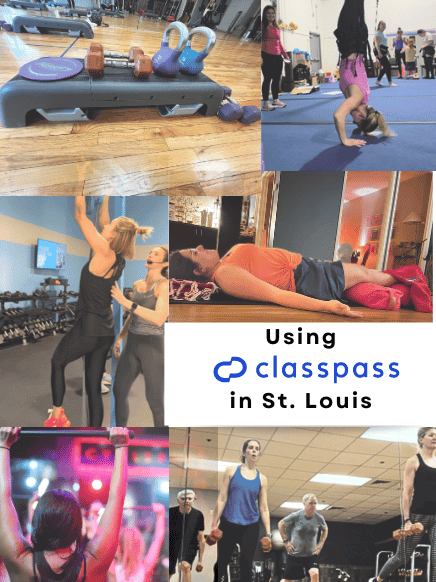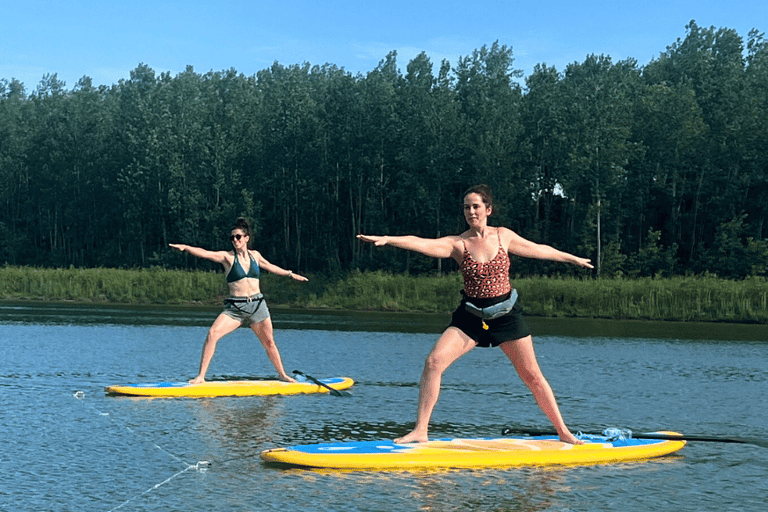How to Recover from Injury Faster – Mentally & Physically
Life can throw curveballs… and when an unexpected injury prevents you from doing the things you love, it can feel devastating. The physical toll of an injury is usually the most obvious but the mental strain can also take a huge impact. In this article, I’ll share with you my most recent personal experience in recovering from a knee injury and provide actionable tips to help you recover faster – mentally & physically.

The Physical Toll of a Sports or Exercise Related Injury
Whether you are an athlete, a fitness professional, or simply someone who loves exercising like me, sports related injuries are bound to happen. It’s impossible to be at your best 100% of the time, so acknowledging that your physical abilities are likely to ebb and flow throughout your life is important. Injuries can range from minor sprains and strains to severe fractures and ligament tears. The physical recovery process often involves rest, physical therapy, and sometimes surgery. Following a medical professional’s advice is crucial to ensure proper healing. This process can be slow and frustrating, requiring patience and dedication.
The Mental Toll of a Sports or Exercise Related Injury
Being sidelined by an injury, can also take a significant psychological toll. Injuries can fuel feelings of isolation, frustration, anxiety and even depression. And missing the things you love can also affect your social & emotional well-being or even your self-identity. Research shows that 1/3 of those recovering from a major orthopedic injury deal with depression afterwards. The reality is, becoming whole again after suffering a sports related injury is more than simply healing the body. Speaking with a mental health professional, joining support groups, or simply talking to friends & family can provide much-needed emotional relief.

Injury Recovery: The 5 Stages of Grief
After my recent knee injury (jump ahead), I realized I’d taken so many of my day-to-day pleasures for granted – walking my kid to the school bus without pain, being able to exercise freely and without constraint, not thinking twice when going places that require long periods of walking or standing. While my injury was quite minor in comparison to what many others may have experienced, it prevented me from living my life to the fullest. Suffering an injury, whether exercise related or otherwise, is in some ways like suffering a loss, and it’s not uncommon for those to go through the 5 stages of grief.
The 5 stages of grief and examples of how I felt going thru each:
- Denial – “My injury isn’t so bad, I’ll just put some ice on it and be back to normal soon”. “I can modify this workout even though my knee hurts, no problem…”
- Anger – “Why did this happen to me?” “Why did I hold that yoga pose so long?” “I’m so mad for not just leaving the rowing class when I felt the pain!!!”
- Bargaining – “Are you sure I can’t do any leg exercises for 10 days??” “Perhaps, if I ice my knee while exercising, it won’t be doing any damage??”
- Depression – “If I can’t exercise, I might as well crawl in a hole and die.”
- Acceptance – “I just need to be patient in my recovery, eventually I will get thru this.” “I am so grateful for all the times I could move freely without thinking about it”.
Remind yourself it’s normal to feel this range of emotions and to give your self the time and space to get through your recovery. As I reflect on my knee injury and the mental & physical journey I’ve been on, here are 5 tips that are important to share.
5 Tips for Recovering Mentally & Physically from an Injury:
- When at-home methods aren’t helping, seek help from the professionals. Start with some at home RICE (rest, ice, compression and elevation), but know when it’s time to get more help. I found myself getting frustrated that I wasn’t able to recover on my own. Seeking help from professionals, like an Orthopedist and/or Physical Therapist, helped me stay optimistic that I was on the road to recovery. It took the guessing game out of the equation and gave me baby steps to look forward to.
- Set Realistic Goals & Have Patience: Always heed the advice from your medical team, but know that after some initial rest, engaging in exercise that is safe for your injury is important for your recovery. Start slow and add more movement in as your body heals. You might not be able to run or row anytime soon, but what can you do?
- Find Alternate Exercises or Hobbies That Bring Joy & Manage Stress: This could be a great time to explore new forms of exercise that won’t stain your injury, like swimming, yoga or Pilates. YouTube is full of workouts for specific injuries so be sure to do a search for your ailment. If your injury prevents movement more broadly, use this as an opportunity to focus on another hobby that might fuel joy – is now a great time to take up painting? Closet reorganizing? Cooking?
- Live with Optimism and Gratefulness: Remind yourself not take things for granted and to enjoy the good days. Stay focused on what’s ahead – better days are coming.
- Don’t Feel Alone, Seek Support. It’s also important to remember that almost every athlete will sustain some sport injury over the course of their career or life. Sharing your struggles with others can help reduce the emotional load – reach out to friends, family or mental health professionals.

A Personal Take – My Knee Injury:
The Initial Injury
Curious how I injured my knee? Well, it’s sort of embarrassing…in mid-May, I volunteered at my son’s school for his 2nd grade jungle themed party. I was assigned to do Animal Yoga with the kids –think cat/cow, eagle pose, cicada pose (it was epic!). I was so pumped to move my body alongside these 7- & 8-year-olds and reinforce how much fun exercise can be. It was a wonderful party, and the kids really impressed me with their flexibility! But a few hours after it ended, my left knee started hurting. I winced in pain while standing and walking…I knew something was wrong. That night, I iced my knee, took a hot bath, some advil and rested.
The Reinjury
After a few days, it started to feel better, so I gave into my body’s cardio craving and took a rowing class (hello denial). This was a terrible choice – which I knew after my first stroke… yet I finished out the class. To make matters worse, I followed through on my promise to take my oldest child, Benji, out on his bike later that day. Which essentially meant, I hobbled around trying to prevent him from crashing on his bike for the next 45 mins. For the next several days, I winced in pain going thru daily tasks like walking, navigating the stairs, cooking & cleaning. I tried my best to treat it at home with the ice, rest, and Advil. I was so angry with myself for reinjuring my knee and for not resting longer.
The Turning Point
Once the anger subsided, I knew I needed to seek professional care. A friend told me about the Washington University Orthopedic walk-in clinic in Chesterfield, so I made it a point to go. The recommended rest was a bit of a blow, “10 whole days away from exercise?” I questioned, grappling with this concept. The nurse practitioner advised I could do arms & abdominal exercises, just not leg. I took a heavy sigh of relief. It was during that 10 days that I purchased the Velcro ice packs, found an amazing Chair workout on Youtube, and my anger turned into acceptance. Shortly after that I started physical therapy at SSM Health and they gave me the clearance to start adding leg exercises back in.
Currently, I am about 6 weeks out from my initial injury & still not 100%. Although I have made alot of progress. I am thrilled to be able to walk without pain. I have started taking select group fitness classes again with an emphasis on low-impact movements, like Pilates, yoga, and barre. And while certain movements and stretches are still out of range for me, I know I am doing the right things to slowly regain my strength & range of motion. I look forward to a time when I don’t have to consider my knee when planning my workouts or moving through my daily life. I hope my story can help you feel less alone if you are also experiencing a similar situation.

Resources That Helped My Recovery from a Knee Injury:
Professionals To Visit:
- I so appreciated the help of the Washington University Walk-In Orthopedic Clinic, who made it so convenient for me to get help. As a busy mom of 3, it’s hard-to-find time to take care of myself and they gave me no excuse not to see a professional. They gave me an X-ray, a physical exam, prescription for Meloxicam (daily anti-inflammatory) and prescription for physical therapy. You can simply walk-in and see a professional the same day for a number of concerns including strains, broken bones, dislocations and more. They have 3 locations to choose from: Chesterfield, O’Fallon & South County. Click here to learn more!
- I am also really grateful for guidance and encouragement from my physical therapists, Allison & Sheila, at SSM Health Physical Therapy. They explained the goal of PT is to help me strengthen the muscles around my knee to prevent reinjury. She showed me stretches and leg exercises to help me gain back my range of motion. We are focusing on building quad & abductor strength so that my kneecap tracks as it used to, without popping or pain. Working with a physical therapist has given me the confidence boost to safely add leg exercises and group fitness back in. SSM Health has over 2000 locations, with several close to my home making it super convenient for me to prioritize.

Items & Resources for Inflammation & Exercise:
Some of the links below contain affiliate links. This means that if you click on a link and purchase a product, I may get a small commission at no cost to you. Please know I only write about products I believe in.
- These Velcro icepacks were super helpful in reducing pain & inflammation in my knee. I found traditional ice packs would simply slide off my knee. These mold to the curves in your body & strap-on to stay in place so you can move easily throughout your day (ideal for knees, ankles, elbows, etc). You can also put them in hot water them and use as a heating pad.
- Finding this 30 Minute Chair workout on YouTube was really a turning point in my recovery. The workout got my heartrate up (from a seated position!) & helped me release some endorphins & feel more like myself! Taught by fitness trainer, NourishMoveLove, who at the time of filming, was recovering from a full knee replacement. Her positivity and encouragement helped me feel seen!
- To make the most of your chair workout (or really any at home workout), make sure to have a few sizes of Dumbbells & Velcro ankle weights on hand. They aided me getting a bit sweaty!
Conclusion
Recovering from a sports or exercise related injury is a challenging journey that affects both the body and mind. I hope this article provided with some tips how to recover faster from injury, both mentally & physically. Taking steps to improve your physical health as well as your mental health are equally important. You may find your emotions changing as your work through your physical recovery and that’s only normal. It’s important to give yourself grace, to be patient in your recovery and to listen to your body. With determination and resilience, you can overcome these hurdles and return to the activities you love.
I’d love to learn more about your injury and any tips that helped you recover. Please comment below!
Learn more about Natalie & read more on the blog.







Leave a Reply